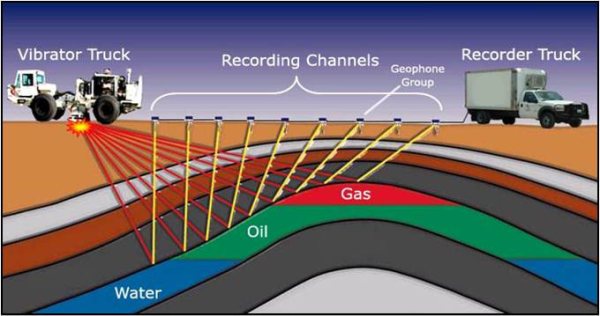Landowner Information
How do seismic surveys work?
Seismic testing has revolutionized the oil and gas industry. Seismic surveys have become the primary tool of exploration companies in the Continental United States. Seismic surveys have lowered finding costs and allowed exploration of reserves not found by previous means. The industry has also embraced seismic in an effort to reduce environmental risk.
Seismic surveys can be conducted in almost any environment-in the ocean, in swamps and in urban areas. There are three phases to seismic surveys: data acquisition, processing and interpretation.
Data Acquisition:
A seismic survey is conducted by creating a shock wave or seismic wave on the ground along a predetermined line, using either small explosive charges set off in shot holes or by a heavy vehicle (Vibroseis truck) with plates that vibrate on the ground. Each energy source will send a seismic wave into the earth and when reflected by subsurface formations, the sound will return to the surface and be recorded by receivers called geophones. By analyzing the time it takes for the seismic waves to reflect of subsurface formations and return to the surface, a geophysicist can map subsurface formations and anomalies and predict where oil or gas may be trapped in sufficient quantities for future exploration activities.

Data Processing:
The data recorded from a seismic survey is originally in its unprocessed or raw form. In order for it to be interpreted, it must go through a series of computerized tests. These processes include filtering, stacking, migrating and other computer analysis which make the data usable during the interpretation process.
Data Interpretation:
Finally, the resulting processed data must be interpreted by the geophysicist or geologist. All seismic data is subject to interpretation and no expert will interpret data identically. The proper interpretation of seismic data is a critical and important step in oil gas discovery.